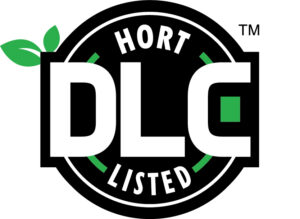This website uses cookies so that we can provide you with the best user experience possible. Cookie information is stored in your browser and performs functions such as recognising you when you return to our website and helping our team to understand which sections of the website you find most interesting and useful.

The DesignLights Consortium (DLC) today announced the first horticultural lighting products tested and determined to meet its new performance standard, an industry benchmark designed to boost efficiency and reduce electricity consumption in the expanding and energy-intensive indoor/vertical horticulture and cannabis cultivation markets.
A DLC-led session at the New England Cannabis Convention on Sunday, March 24, will detail the new grow light standard, which utilities can now use to set energy efficiency incentives that lower the cost of qualified lighting products for growers.
Finalized late last fall following a two-year stakeholder input process, the DLC specification coincides with booming demand for efficient and effective horticultural lighting in the face of a rapid increase in indoor Controlled Environment Agriculture (CEA) and newly-legal cannabis cultivation in several US states and Canada. Utilities across North America are planning to rely on the new policy and corresponding Qualified Products List (QPL) in deciding which lighting products to incentivize in energy efficiency programs delivered to their horticultural customers.
Due to their superior efficiency and longevity, only light-emitting diode (LED) products qualify under the new standard. To be included on the DLC’s new Horticultural QPL, an LED fixture must be at least 10 percent more energy efficient than the next-best alternative, a 1,000-watt high-pressure sodium light. The policy reflects both a drive for greater efficiency and the nascent state of scientific understanding of lighting for plants. The DLC has committed to revising the specification to more rigorous standards every two years as the state of the art continues to advance. The process for initial listing on the QPL and for the two-year update relies not on self-reporting by manufacturers, but on data generated by third-party certified testing labs.
Products meeting the new requirements will qualify to bear the DLC’s horticultural lighting logo:

“Horticultural lighting represents one of fastest growing electric load categories for many of the DLC’s utility members. Thanks to a robust, inclusive stakeholder input process, there is tremendous opportunity to capture these energy savings. The DLC is pleased to provide a tool that can help mitigate energy load for this emerging industry,” DLC Executive Director Christina Halfpenny said.
A December 2017 report prepared by Navigant Consulting, Inc. for the US Department of Energy (DOE) put the annual electricity consumption of US horticultural lighting installations at 5.9 terawatt hours (TWh), equal to the annual electricity usage of approximately 550,000 US households. The report estimated that consumption will increase between 15 and 25 percent per year as more indoor agricultural operations come on line. Switching to all LED technology, however, could reduce the sector’s annual electricity consumption by 40 percent, a savings of approximately $240 million, according to the DOE report.
Against this backdrop and led by DLC Technical Manager Damon Bosetti, the DLC conducted an engagement process involving interviews with 20 fixture manufacturers, and consultation with the Lighting Research Center (LRC) and Lighting Enabled Systems and Applications (LESA) at Rensselaer Polytechnic Institute, a multi-university consortium led by Cornell University called Greenhouse Lighting and Systems Engineering (GLASE), the American Society of Agricultural and Biological Engineers (ASABE), and the Chief Technology Officer of AeroFarms – a large-scale indoor grower of leafy greens and herbs in Newark, NJ. The policymaking process also involved a technical advisory committee, an industry advisory committee, and a horticultural working group comprising DLC utility members particularly interested in horticultural topics.
“It was incredibly valuable to be a part of the horticulture working group over the last few years, representing the utilities’ needs and challenges,” said Lauren Morlino, Emerging Technologies & Services Manager for Efficiency Vermont. “With so many new metrics involved with qualifying horticulture fixtures, Efficiency Vermont knew there was a huge opportunity, but didn’t know where to start! We plan to use the DLC Horticulture list and specification as a guide to offering residential and commercial grow light incentives in 2019 and beyond. The list helps us by reviewing and testing product performance, quality, and efficiency, which we would never have the resources to do on such a large scale ourselves.”
While the DLC’s efficacy requirements for horticultural lighting won’t officially change until late 2020, the DLC will look at its database of products in 18 months to determine the threshold between the top 85 percent most efficient and the bottom 15 percent least efficient products. That threshold will then become the new minimum energy efficiency standard for the next cycle. In addition, the DLC will allow a six-month listing grace period after the new standard takes effect in 2020, allowing manufacturers a full 12 months of lead time to sell through existing inventory or update products.
Besides setting a floor for photosynthetic photon efficacy (how efficiently a fixture takes electrical power and converts it to photons), the DLC has set product technical requirements for lifetime of critical life-limiting components like drivers, LEDs, and fans, recognizing the importance of early adopters having a positive experience in the switch to LED. In addition, the DLC has enhanced reporting on spectrum content in its QPL in recognition that various levels of blue, green, red, or far red light are important for optimal plant performance in various crops and/or environments.
Learn more about the DLC’s Testing and Reporting Requirements for LED-based Horticultural Lighting here. See products listed on the new horticultural QPL here.
© 2023 DesignLights Consortium. The DesignLights Consortium is a project of Efficiency Forward, Inc., a non-profit 501(c)3 organization. Privacy Policy Terms of Use
